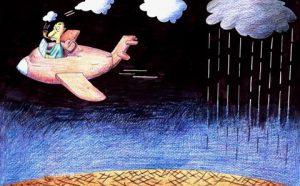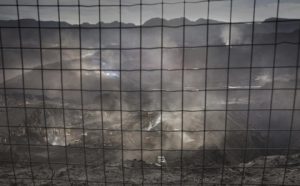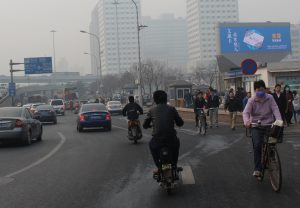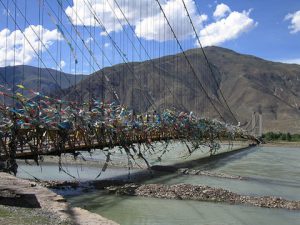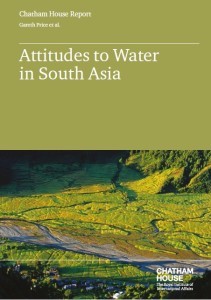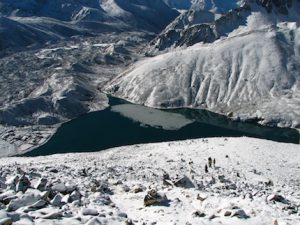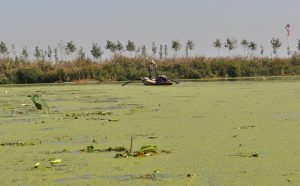When the wheat harvest on the North China Plain comes to an end, farmers pull lighters from their pockets and set fire to mounds of leftover stalks. Smoke plumes from millions of acres of burning farmland billow toward the cities of central China.
On June 11 and 12 2014, strong northeastern winds carried the smoke to Wuhan (an industrial city in Hubei province). By the afternoon of June 12, air pollution in Wuhan had spiked to unseen levels. Visibility across the city dropped to less than 1,000 meters. PM 2.5 (fine particulate matter which can cause respiratory problems) concentrations reached 895 micrograms per cubic metre, a higher level than the PM 2.5 count recorded in January 2013 in Beijing that western media labelled “The Airpocalypse” (and far in excess of the World Health Organisation’s (WHO) guideline figure of 25 micrograms per cubic metre over a 24-hour period). PM 2.5 has also been labelled a Group 1 carcinogen by the WHO.
The crop-burning continued. On June 15, measuring devices in Hefei, a city in Anhui province, recorded PM 2.5 levels spiking to a high of 758 micrograms. It was the city’s highest PM 2.5 level on record since fine particulate matter began to be measured in November 2012.
Rise of stalk burning
The winter wheat crop on the North China Plain generally ripens by early June. Combine harvesters cut the wheat, leaving behind a layer of residual stalks and chaff. Before the land is ploughed, and the summer crops can be planted, the remaining wheat stalks must be cleared by either manually raking and shoveling the wheat stalks into piles, or burning off the residual stalks and chaff. Clearing a one mu plot (1/6 an acre) takes about 9 man-hours of labor. With the average household on the North China Plain farming about 10 mu of land, crop-burning both saves 90 man-hours of labour and more thoroughly clears stalks from the soil. Consequently, most farmers choose to burn off the wheat stalks.
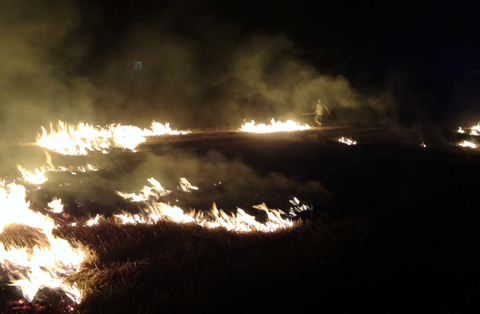
In the past leftover stalks were put to many uses —cooking fires were lit with straw; draft animals were fed straw; tanks generated methane using decomposing straw; and straw-based manure was spread on the fields.
But as one farmer explained, “The stalks are waste now. No one needs wheat stalks anymore”. Combine harvesters now handle the bulk of the harvesting work, cutting the length of the harvest from months to weeks. Most working age peasants have left the countryside to work in factories, construction sites, barbershops, and restaurants in China’s cities leaving the farm work to the older generations. Fewer hands make labour-intensive tasks like collecting leftover wheat stalks overly burdensome.
Chinese officials have long recognised the environmental harm in annually setting the North China Plain afire. In 2008, the year of the Beijing Olympics, local governments diligently carried out anti-crop burning campaigns; the data show a significant decrease in post-harvest fires. But after the Olympics, the practice slowly returned, as shown in this animation. Though most of the fires burn in the course of a week, all harvest images include a one month period starting on May 20 of the year in question, as the actual time of the harvest varies year to year.
An enforcement problem?
Local governments pay lip service to the task of eliminating the crop-burning. A look at one township in southeast Henan province, which I visited during the 2013 harvest, captures the difficulty of eliminating the practice. The local Safety Bureau dispatched a silver minivan into the fields every day. A red banner on its nose read, “Prohibit Burning Wheat Stalks Propaganda Vehicle” and a sizable red loudspeaker mounted to its roof repeated, “To ensure the smooth progress of the wheat harvest, we announce the following regulations: Pidian Township is now a key township … Whoever starts a fire will be punished. Whoever’s land burns will be punished.”
On the same day, local officials went from home to home in the township’s villages, pasting pink notices to doors that warned farmers that if they burned off their wheat stalks they could be detained for up to 15 days and face fines as high as 2,000 Yuan.
When the warnings were first issued, the peasants of Pidian Township followed the government regulations. But, four days later, the wheat kernels of Pidian Township were harvested, and the peasants took out their lighters. A peasant farmer from one of the villages explained, “We have all harvested our wheat. We don’t have to worry about the fires spreading to our neighbours’ wheat.” His village was the closest to the township, so he and his fellow villagers waited until night to start their fires.
The following afternoon, officials in the Prohibit Burning Wheat Stalks Propaganda Vehicle caught two farmers lighting piles of wheat stalks on a plot that bordered the road. The officials called the two peasants up to the concrete road and circled around. Minutes later a police car arrived. Three officers joined the circle ringing the two men.
After questioning the farmers, the youngest of the three policeman confided, “We just gave them a warning … I am sure the American police are much more strict. Here the peasants do not follow the law.”
Video animation was generated from FIRMS data and imagery from the Land Atmosphere Near-real time Capability for EOS (LANCE) system operated by the NASA/GSFC/Earth Science Data and Information System (ESDIS) with funding provided by NASA/HQ.
